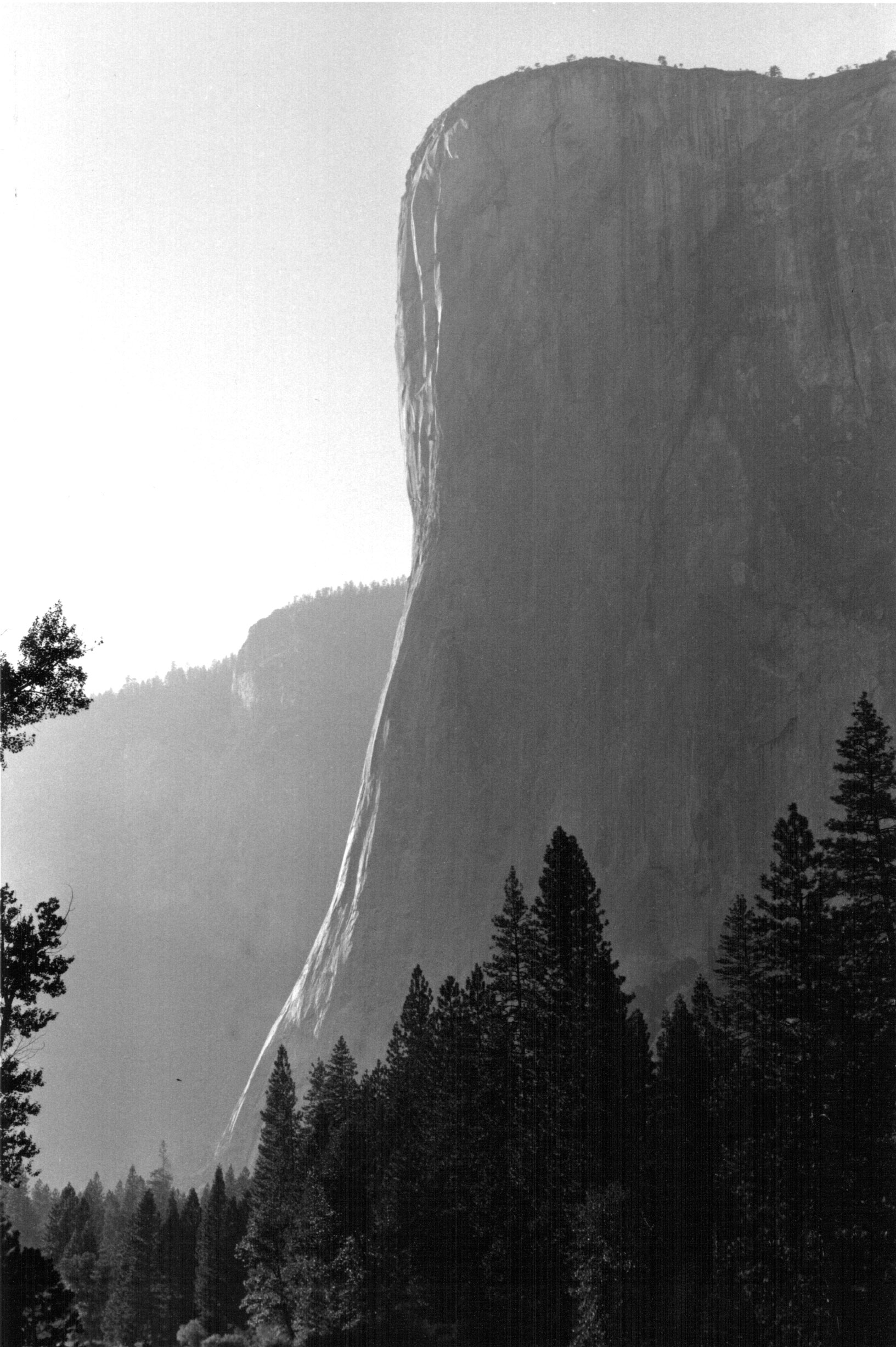|
On 27 March 1851, 58 members of the Mariposa Battalion entered
Yosemite Valley
. Of these, medical officer
Lafayette Bunnell took the greatest personal interest in naming the
Valley features. In Discovery
of the Yosemite, Bunnell explained, “In adopting the Spanish
interpretation, ‘El Capitan,’ for Tote-ack-ah-noo-la, we pleased our
mission interpreters and conferred upon the majestic cliff a name
corresponding to its dignity.” When
preparing his book, Bunnell cited Josiah D. Whitney’s Yosemite
Guide Book:
Prof. Whitney in
speaking of this object of grandeur and massiveness, says:
‘
El Capitan
is an immense block of granite, projecting squarely out into the valley,
and presenting an almost vertical sharp edge, 3,300 feet in elevation.
The sides or walls of the mass are bare, smooth, and entirely
destitute of vegetation. It
is almost impossible for the observer to comprehend the enormous
dimensions of this rock, which in clear weather can be distinctly seen
from the San Joaquin plains at a distance of fifty or sixty miles.
Nothing, however, so helps to a realization of the magnitude of
these masses about the
Yosemite
as climbing around and among them. Let
the visitor begin to ascend the pile of debris
which lies at the base of
El Capitan
, and he will soon find his ideas enlarged on the point in question.
And yet these debris piles along the cliffs, and especially under
El Capitan
, are of insignificant size compared with the dimensions of the solid
wall itself. It
is doubtful if anywhere in the world there is presented so squarely cut,
so lofty and so imposing a face of rock.
“The foregoing is the most concise and best description of
El Capitan
I have ever seen, and yet it cannot impart the ecstasy of reverence for
the sublime one feels in its presence.”
(Bunnell)
A
decade and a half later, Clarence King inspected
Yosemite Valley
as a member of the Geological Survey of California.
From the top of the Three Brothers he reported, “Looking back
at
El Capitan
, its sharp vertical front was projected against far blue foot-hills,
the creamy whiteness of sunlit granite cut upon aerial distance, clouds
and cold blue sky shutting down over white crest and jetty pine-plumes,
which gather helmet-like upon its upper dome.
Perspective effects are marvelously brought out by the stern,
powerful reality of such rock bodies as Capitan.” (Clarence
King, Mountaineering in the Sierra Nevada)
EL CAP PROFILE, Photographed 14 September 1960, the day after completion
of the second ascent of the Nose by Robbins, Pratt, Fitschen, and Frost,
Yosemite National Park, California.
|
